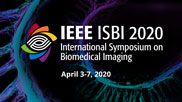Collection:

Automatic detection of virus particles displayed as small spots in fluorescence microscopy images is an important task to elucidate infection processes. Particles are typically labeled with multiple fluorophores to acquire multi-channel images. We propose a new weakly supervised approach for automatic particle detection in the lower SNR channel of two-channel fluorescence microscopy data. A main advantage is that labeled data is not required. Instead of using labeled data, colocalization in different channels is exploited as a surrogate for ground truth using a novel measure. Our approach has been evaluated using synthetic as well as challenging live cell microscopy images of human immunodeficiency virus type 1 particles. We found, that our approach yields comparable results to a state-of-the-art supervised method, and can cope with defective fluorescent labeling as well as chromatic aberration of the microscope.
- IEEE MemberUS $11.00
- Society MemberUS $0.00
- IEEE Student MemberUS $11.00
- Non-IEEE MemberUS $15.00
Videos in this product
Optimizing Particle Detection by Colocalization Analysis in Multi-Channel Fluorescence Microscopy Images
Automatic detection of virus particles displayed as small spots in fluorescence microscopy images is an important task to elucidate infection processes. Particles are typically labeled with multiple fluorophores to acquire multi-channel images. We propose a new weakly supervised approach for automatic particle detection in the lower SNR channel of two-channel fluorescence microscopy data. A main advantage is that labeled data is not required. Instead of using labeled data, colocalization in different channels is exploited as a surrogate for ground truth using a novel measure. Our approach has been evaluated using synthetic as well as challenging live cell microscopy images of human immunodeficiency virus type 1 particles. We found, that our approach yields comparable results to a state-of-the-art supervised method, and can cope with defective fluorescent labeling as well as chromatic aberration of the microscope.
 Cart
Cart Create Account
Create Account Sign In
Sign In
